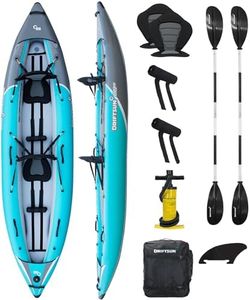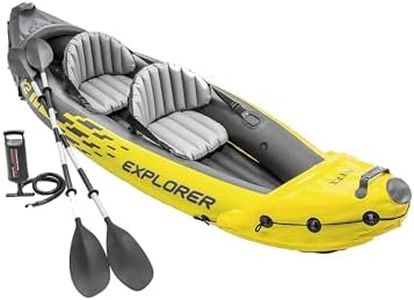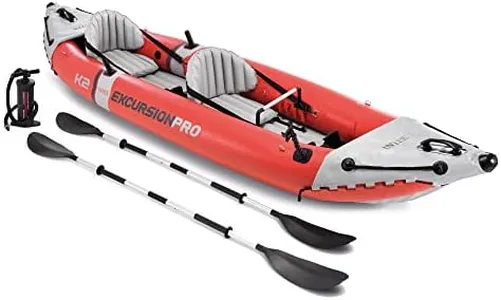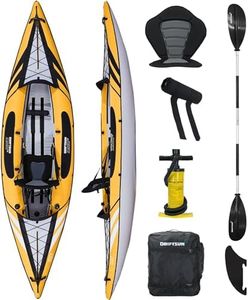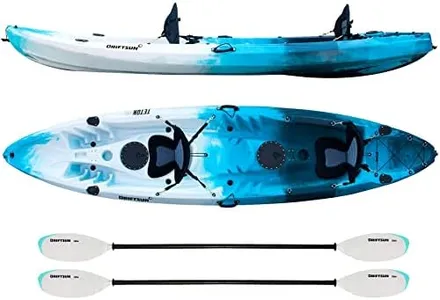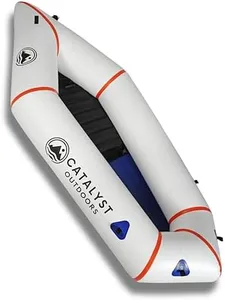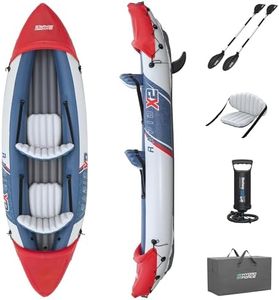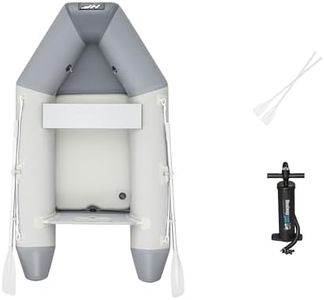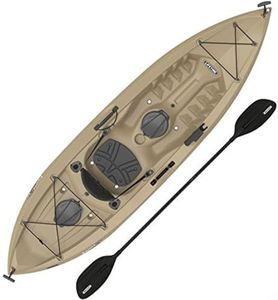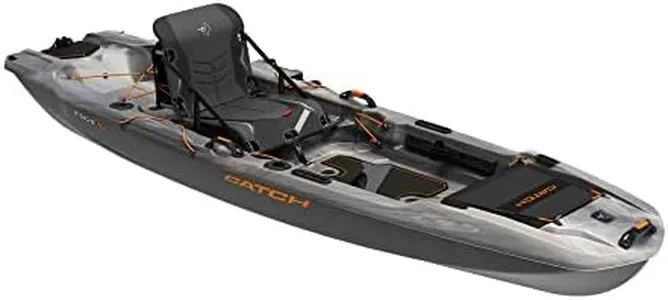10 Best Recreational Kayaks 2025 in the United States
Our technology thoroughly searches through the online shopping world, reviewing hundreds of sites. We then process and analyze this information, updating in real-time to bring you the latest top-rated products. This way, you always get the best and most current options available.

Our Top Picks
Winner
Intex 2-Person Inflatable Kayak Set w/ Pump, Aluminum Oars, Adjustable Seats, Explorer K2 - Tandem Blow-up Raft for Adults, Great for Lakes or Rivers
Most important from
29875 reviews
The Intex Explorer K2 is a lightweight, inflatable 2-person kayak designed for casual recreational use on calm waters like lakes and gentle rivers. It measures about 10.3 feet long and 3 feet wide, providing reasonable stability thanks to its inflatable I-beam floor and high-buoyancy side chambers. It supports up to 350 pounds, which comfortably fits two adults or an adult and a child. The kayak’s vinyl material is durable enough for typical recreational outings but requires care to avoid punctures. Inflation and deflation are quick with the included high-output pump and Boston valves, making setup and breakdown hassle-free.
Seating is adjustable with two inflatable seats that include backrests, offering decent comfort for short to moderate trips, although they may lack the support preferred for longer paddling sessions. The cockpit is open and roomy enough for easy entry and exit but not very enclosed, so it’s best suited for calm water to avoid splashing in. Storage options are limited, mostly relying on grab handles and some internal space, which is common for inflatable kayaks. The removable skeg helps with directional control, improving tracking on the water.
The Intex Explorer K2 kayak serves as a great budget-friendly choice for beginners or casual paddlers looking to enjoy relaxed outings on flat water. Its portability and ease of use stand out, although it is not ideal for rough waters, heavy loads, or serious touring. For those seeking a simple, fun tandem kayak for occasional use and easy transport, this model is a solid pick.
Most important from
29875 reviews
Intex 68309EP Excursion Pro K2 Inflatable Kayak Set: Includes Deluxe 86in Kayak Paddles and High-Output Pump – SuperTough PVC – Adjustable Bucket Seat – 2-Person – 400lb Weight Capacity
Most important from
7175 reviews
The Intex Excursion Pro K2 is a well-built inflatable kayak designed for two people, measuring about 12.5 feet long and 3 feet wide. It can support up to 400 pounds, making it suitable for solo paddling or tandem use with an adult and a child or two smaller adults. Made from super-tough, layered PVC material, it offers good durability and resistance to wear from sun and bumps, which is important for casual adventures on lakes or slow rivers.
The inflatable design means it’s easy to carry and store, folding down into a compact bag, though it does weigh around 45 pounds, so it’s not ultra-light. The kayak inflates to a firm structure that improves stability and control, aided by two removable skegs (small fins) that help with steering in different water conditions. It includes adjustable bucket seats that offer decent comfort, though they may not match the support of hard-shell kayaks if you plan long trips. Storage is practical, with space in both the front and back sections and stainless steel rings for securing gear or dry bags, which is great for day outings.
Accessories like paddles, a pump, fishing rod holders, and mounts for a camera or phone add extra value for beginners or casual users interested in fishing or capturing their adventure. Its plastic-based material and inflatable nature mean it won’t perform as well in rough water or for high-speed paddling compared to rigid kayaks. This kayak serves as a solid choice for recreational paddlers wanting an affordable, portable, and versatile option for calm water fun and light fishing trips.
Most important from
7175 reviews
Perception Joyride 10 | Sit Inside Kayak for Adults and Kids | Recreational and Multi-Water Kayak with Selfie Slot | 10' | Sunset
Most important from
177 reviews
The Perception Joyride 10 is a sit-inside recreational kayak measuring 10 feet long and about 29.5 inches wide, making it a manageable size for both adults and kids to handle on the water. It supports up to 275 pounds, which suits most solo paddlers comfortably. Made from durable polyethylene, it promises good longevity and resistance to common wear.
The kayak is designed for comfort, featuring a spacious cockpit that allows for easy entry and exit, plus a seat meant to keep you comfortable during longer outings. Stability is a strong point here, so it's a good match for calm lakes, slow rivers, and gentle coastal waters, offering good balance for beginners or casual paddlers. Storage options include a rear tankwell and a front hatch, which provide useful space to carry essentials like snacks, gear, or safety equipment. A fun addition is the built-in selfie slot, letting you capture your adventures without needing extra accessories.
Weighing around 42 pounds, it's light enough to transport without much trouble but still sturdy on the water. However, this kayak might feel a bit narrow for those seeking extra room or for paddlers over 6 feet tall, and its weight capacity limits it to lighter gear loads. The Perception Joyride 10 serves as a reliable and comfortable choice for recreational users looking for a simple, stable kayak to enjoy various calm water activities.
Most important from
177 reviews
Buying Guide for the Best Recreational Kayaks
Choosing the right recreational kayak can greatly enhance your paddling experience, whether you're exploring calm lakes, slow-moving rivers, or coastal waters. The key to finding the best fit for you is to understand the different specifications and how they align with your needs and preferences. Here are the main specs to consider when selecting a recreational kayak.FAQ
Most Popular Categories Right Now
